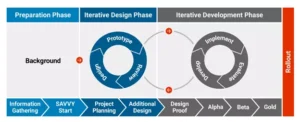Shop this story
Instructional Design Models for Attitudinal Change
Instructional Design Models and Approaches for Attitudinal Change
Attitudinal change is a critical objective in education, especially in fields such as social studies, where understanding and engaging with diverse perspectives is paramount. Various instructional design models and approaches can facilitate attitudinal change by promoting behavioral, cognitive, and emotional engagement among learners.
This article explores three key models: behaviorist, cognitive, and constructivist, and discusses how to design instruction for both affective and behavioral learning outcomes, as well as reflective and transformative learning.
Models of Attitudinal Change
Behaviorist Model
Overview:
The behaviorist model of learning emphasizes observable behaviors and the ways they can be shaped through reinforcement and conditioning. This model suggests that attitudes can be changed by modifying the behaviors associated with those attitudes through the use of rewards or punishments.
Key Characteristics:
– Reinforcement: Positive or negative reinforcement can encourage desired attitudes or behaviors.
– Direct Instruction: Learning is typically structured with clear objectives and assessments that measure behavioral changes.
Application to Attitudinal Change:
1. Set Clear Objectives: Define specific desired attitudes you wish to influence.
2. Reinforcement Strategies: Use rewards for demonstrating desired behaviors (e.g., participation in civic engagement activities).
3. Assessment: Measure shifts in attitudes through behavioral assessments or self-report surveys, linking them to specific instructional events.
Cognitive Model
Overview:
The cognitive model focuses on the mental processes involved in learning, such as understanding, memory, and problem-solving. Cognitive theorists argue that attitudinal changes involve an individual’s cognitive structures and how they interpret information.
Key Characteristics:
– Information Processing: Learners must actively process and integrate new information to adjust their beliefs or attitudes.
– Meta-Cognition: Encouraging learners to be aware of their thinking processes can facilitate changes in attitudes.
Application to Attitudinal Change:
1. Teach Critical Thinking Skills: Design activities that promote analysis and evaluation of different perspectives.
2. Reflection Activities: Encourage learners to reflect on their beliefs, leading them to reassess their attitudes based on new information.
3. Use of Cognitive Tools: Incorporate graphic organizers, concept maps, or discussion forums to help learners visualize connections between their attitudes and the information presented.
Constructivist Model
Overview:
Constructivism posits that learners construct their own understanding of the world through experiences and reflection. This model emphasizes the role of social interaction and collaborative learning in shaping attitudes.
Key Characteristics:
– Active Learning: Learners engage in hands-on activities that are meaningful to them.
– Collaborative Environment: Social interaction with peers helps to broaden perspectives and facilitate attitudinal shifts.
Application to Attitudinal Change:
1. Group Discussions: Create opportunities for students to discuss beliefs and values openly, fostering dialogue and perspective-taking.
2. Problem-Based Learning: Present real-world problems that require collaboration and critical thinking, encouraging students to challenge their existing attitudes.
3. Reflection and Narratives: Encourage students to share personal experiences and narratives that relate to their attitudes, promoting empathetic understanding.
Designing Instruction for Affective and Behavioral Learning Outcomes
When designing instruction aimed at achieving affective (emotional) and behavioral learning outcomes, it’s essential to integrate strategies that address emotions, attitudes, and observable actions.
Affective Learning Outcomes:
– Emotional Engagement: Create learning experiences that foster emotional responses, such as empathy or awareness.
– Personal Relevance: Relate topics to students’ lives to stimulate emotional connections and facilitate attitude shifts.
– Assessing Affective Outcomes: Use self-assessment tools, reflective journals, or discussions to enable students to articulate their emotional responses and changes in attitudes.
Behavioral Learning Outcomes:
– Skill Development: Focus on teaching specific skills and behaviors that align with desired attitudes (e.g., community engagement, respectful discourse).
– Interactive Activities: Design role-playing or simulation activities that encourage students to practice desired behaviors in realistic contexts.
– Feedback Mechanisms: Provide timely feedback to reinforce positive behavior, helping students recognize when they are embodying the attitudes you aim to promote.
Designing Instruction for Reflective and Transformative Learning
Reflective Learning Design:
Reflective learning involves critical thinking about experiences, enabling learners to make connections between their attitudes and the wider world.
1. Structured Reflection: Incorporate reflective journals, portfolios, or guided discussions that prompt students to think about their learning experiences and initial attitudes.
2. Questioning Techniques: Use open-ended questions that encourage students to explore their beliefs deeply and why they may need to change.
3. Peer Feedback: Facilitate opportunities for students to share reflections in groups, encouraging diverse perspectives and fostering deeper insights.
Transformative Learning Design:
Transformative learning is a process by which individuals reinterpret their experiences, leading to profound changes in personal beliefs and attitudes.
1. Critical Reflection: Design learning experiences that challenge students’ assumptions and invite them to consider alternative perspectives (e.g., debates on social issues).
2. Experiential Learning: Use service learning or community engagement projects that immerse students in new contexts where they can apply their learning while re-evaluating their attitudes.
3. Support Systems: Provide scaffolding and support as students navigate the potentially uncomfortable process of challenging and transforming their beliefs.
Conclusion
The landscape of attitudinal change in education is rich with theoretical foundations and practical applications.
By understanding behaviorist, cognitive, and constructivist approaches, educators can design effective instruction that not only fosters critical thinking and emotional engagement but also leads to important behavioral changes.
The focus on affective and behavioral learning outcomes, combined with reflective and transformative learning strategies, empowers students to become engaged citizens who critically evaluate their beliefs and values.
As you develop your instructional design plans, incorporating these models and approaches can facilitate meaningful changes in your students’ attitudes, ultimately contributing to their personal and academic success.
Share this…
Shop this story
Luxury Jewelry Sets
Instructional Strategies for Attitudinal Change
Further reading
- Afghan afghani (؋)
- Albanian lek (L)
- Algerian dinar (د.ج)
- Angolan kwanza (Kz)
- Argentine peso (ARS $)
- Armenian dram (AMD)
- Aruban florin (Afl.)
- Australian dollar ($)
- Azerbaijani manat (AZN)
- Bahamian dollar ($)
- Bahraini dinar (.د.ب)
- Bangladeshi taka (৳ )
- Barbadian dollar ($)
- Belarusian ruble (Br)
- Belize dollar ($)
- Bermudian dollar ($)
- Bhutanese ngultrum (Nu.)
- Bolivian boliviano (Bs.)
- Bosnia and Herzegovina convertible mark (KM)
- Botswana pula (P)
- Brazilian real (R$)
- Brunei dollar ($)
- Bulgarian lev (лв.)
- Burmese kyat (Ks)
- Burundian franc (Fr)
- CFP franc (Fr)
- Cambodian riel (៛)
- Canadian dollar ($)
- Cape Verdean escudo ($)
- Cayman Islands dollar ($)
- Central African CFA franc (CFA)
- Chilean peso (CLP $)
- Chinese yuan (¥)
- Colombian peso (COP $)
- Comorian franc (Fr)
- Congolese franc (Fr)
- Costa Rican colón (₡)
- Croatian kuna (Kn)
- Cuban convertible peso (CUC$)
- Cuban peso (CUP ₱)
- Czech koruna (Kč)
- Danish krone (DKK)
- Djiboutian franc (Fr)
- Dominican peso (RD$)
- East Caribbean dollar ($)
- Egyptian pound (EGP)
- Eritrean nakfa (Nfk)
- Ethiopian birr (Br)
- Euro (€)
- Falkland Islands pound (£)
- Fijian dollar ($)
- Gambian dalasi (D)
- Georgian lari (ლ)
- Ghana cedi (₵)
- Gibraltar pound (£)
- Guatemalan quetzal (Q)
- Guernsey pound (£)
- Guinean franc (Fr)
- Guyanese dollar ($)
- Haitian gourde (G)
- Honduran lempira (L)
- Hong Kong dollar ($)
- Hungarian forint (Ft)
- Icelandic króna (kr.)
- Indian rupee (₹)
- Indonesian rupiah (Rp)
- Iranian rial (﷼)
- Iraqi dinar (ع.د)
- Israeli new shekel (₪)
- Jamaican dollar ($)
- Japanese yen (¥)
- Jersey pound (£)
- Jordanian dinar (د.ا)
- Kazakhstani tenge (KZT)
- Kenyan shilling (KSh)
- Kuwaiti dinar (د.ك)
- Kyrgyzstani som (сом)
- Lao kip (₭)
- Lebanese pound (ل.ل)
- Lesotho loti (L)
- Liberian dollar ($)
- Libyan dinar (ل.د)
- Macanese pataca (P)
- Macedonian denar (ден)
- Malagasy ariary (Ar)
- Malawian kwacha (MK)
- Malaysian ringgit (RM)
- Maldivian rufiyaa (.ރ)
- Manx pound (£)
- Mauritian rupee (₨)
- Mexican peso (MXN $)
- Moldovan leu (MDL)
- Mongolian tögrög (₮)
- Moroccan dirham (د.م.)
- Mozambican metical (MT)
- Namibian dollar ($)
- Nepalese rupee (₨)
- Netherlands Antillean guilder (ƒ)
- New Taiwan dollar (NT$)
- New Zealand dollar ($)
- Nicaraguan córdoba (C$)
- Nigerian naira (₦)
- North Korean won (₩)
- Norwegian krone (kr)
- Omani rial (ر.ع.)
- Pakistani rupee (₨)
- Panamanian balboa (B/.)
- Paraguayan guaraní (₲)
- Philippine peso (PHP ₱)
- Polish złoty (zł)
- Pound sterling (£)
- Qatari riyal (ر.ق)
- Romanian leu (lei)
- Russian ruble (₽)
- Rwandan franc (Fr)
- Saint Helena pound (£)
- Samoan tālā (T)
- Saudi riyal (ر.س)
- Serbian dinar (дин.)
- Seychellois rupee (₨)
- Sierra Leonean leone (Le)
- Singapore dollar ($)
- Peruvian nuevo sol (S/.)
- Solomon Islands dollar ($)
- Somali shilling (Sh)
- South African rand (R)
- South Korean won (₩)
- South Sudanese pound (£)
- Sri Lankan rupee (රු)
- Sudanese pound (ج.س.)
- Surinamese dollar ($)
- Swazi lilangeni (L)
- Swedish krona (kr)
- Swiss franc (CHF)
- Syrian pound (ل.س)
- Tajikistani somoni (ЅМ)
- Tanzanian shilling (Sh)
- Thai baht (฿)
- Tongan paʻanga (T$)
- Trinidad and Tobago dollar ($)
- Tunisian dinar (د.ت)
- Turkish lira (₺)
- Turkmenistan manat (m)
- Ugandan shilling (UGX)
- Ukrainian hryvnia (₴)
- United Arab Emirates dirham (AED)
- United States dollar ($)
- Uruguayan peso ($U)
- Uzbekistani som (UZS)
- Vanuatu vatu (Vt)
- Vietnamese đồng (₫)
- West African CFA franc (CFA)
- Yemeni rial (﷼)
- Zambian kwacha (ZK)
- Smart Shop (426)
- Smart Health (21)
- Privacy Policy
- HT Mall
- About Us
- Start Here
- HT Blog
- Shop Here (426)
- Human Hair (21)
- Smart Phones (63)
- Network Devices (18)
- Smart Watches (17)
- Smart Games (6)
- Smart Nail Care (7)
- Kitchenware (11)
- Phone Accessories (15)
- Smart Razors (2)
- Car Accessories (15)
- Smart Kid (10)
- Smart Devices (49)
- Smart Phones (63)
- Smart Massagers (29)
- Phone Accessories (15)
- Slim Fit (18)
- Smart Lights (7)
- Anti Aging (5)
- Books (3)
- Smart Hair Care (3)
- Smart Routers (1)
- Smart Security (8)
- Earn with Us
- Wishlist















Leave a comment